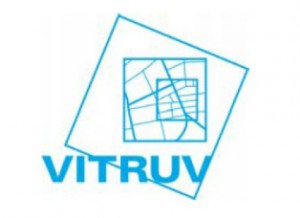Vulnerability Identification Tools for Resilience Enhancements of Urban Environments
Brief Summary:
Increasing urbanisation drives the need for new solutions for security issues on all levels of urban planning. The goal of this project was the development of a set of computer assisted tools that enable urban planners and associated parties, such as architects or engineers to make well-considered, systematic, qualitative and quantitative assessments of urban areas regarding security issues. In the long-term this will contribute to more robust and resilient cities with a quantitative balance between costs and benefits.
A suite of computerized tools was developed under the name VITRUV and is readily available for security considerations in urban planning. All the tools were intensively tested over a 12 month period in the project with representative users from urban areas in Bologna, Copenhagen, London and Waterford.
SecuRbAn (quick risk assessment tool: http://www.vitruv-project.eu/downloads.html) provides qualitative but well-structured decision support at the concept level, before site maps are drawn. The tool assesses the potential relevance of security issues for (re)developed of urban areas based on a questionnaire. It allows the comparison with different configurations and similar situations. The support tool is linked with and supplemented by the online Urban Securipedia knowledge base (http://www.securipedia.eu) which provides a wider range of security relevant definitions, background and potential countermeasures to the user.
When maps are to be drawn, or partly exist for an area to be re-developed the Plan and Detail level tools allow quantitative risk analysis to be undertaken by none-specialist users. The 3D graphical user interface provides the choice of a wide range of pre-defined urban infrastructure types including their use and cost. First fast analysis on the “VITRUV plan level†is based on empirical data extracted from the Terrorist Event Database (an in-house but widely recognised database from the Fraunhofer Institute for High-Speed Dynamics, Ernst-Mach-Institut). The software allows the evaluation of the susceptibility (empirical probability of an event) of urban objects and their users and the vulnerability (empirical consequences per event). The quantitative empirical risk can be computed and conveniently visualised as the product of both quantities.
An additional refinement step allows on the VITRUV detail level a more accurate but more time consuming prediction using physical consequence models:
- Explosive threats and effects, using empirical mass-distance relationships for the loading and simplified mechanical models (SDOF) for the damage to infrastructure and persons, together with enhancement products and their associated costs;
- Engineering tables to evaluate progressive collapse, derived from linear dynamic in combination with non-linear static finite element analyses of the pre-defined building structures;
- An engineering model for traffic disruption, calculating delay times and reconstruction costs;
- Poisonous gas clouds (biological or chemical) in CFD calculations combined with threshold concentrations for damage to humans.
>> View European Commission website with details of project
Project details:
Framework Programme7 Security
SP1-Cooperation-261741
1 May 2011 to 30 April 2014
Budget: 4.520.921,80 EUR
Publications:
W. Riedel, A. Nieuwenhuijs, K. Fischer, S. Crabbe, W. Hynes, I. Muellers, S. Trojaborg and I. Haering; Quantifying urban risk and vulnerability – A toolsuite of new methods for planners; 9th Future Security, Security Research Conference Proceedings; K. Thoma, I. Haering, T. Leismann (Eds.), (ISBN 978-3-8396-0778-7), p. 8-15, Berlin, 2014.
K. Fischer, W. Riedel, I. Haering, A. Nieuwenhuijs, S. Crabbe, W. Hynes, S. Trojaborg and I. Muellers; Vulnerability Identification and Resilience Enhancements of Urban Environments; European Urban Research Association, EURA Conference, Vienna, 2012.
K. Fischer, W. Riedel, I. Haering, A. Nieuwenhuijs, S. Crabbe, W. Hynes, and I. Muellers; Vulnerability Identification and Resilience Enhancements of Urban Environments; 7th Future Security, Security Research Conference Proceedings; N. Aschenbruck, P. Martini, M. Meier, J. Toelle (Eds.), (ISBN 978-3-642-33161-9), p. 176-179, Berlin, 2012.

